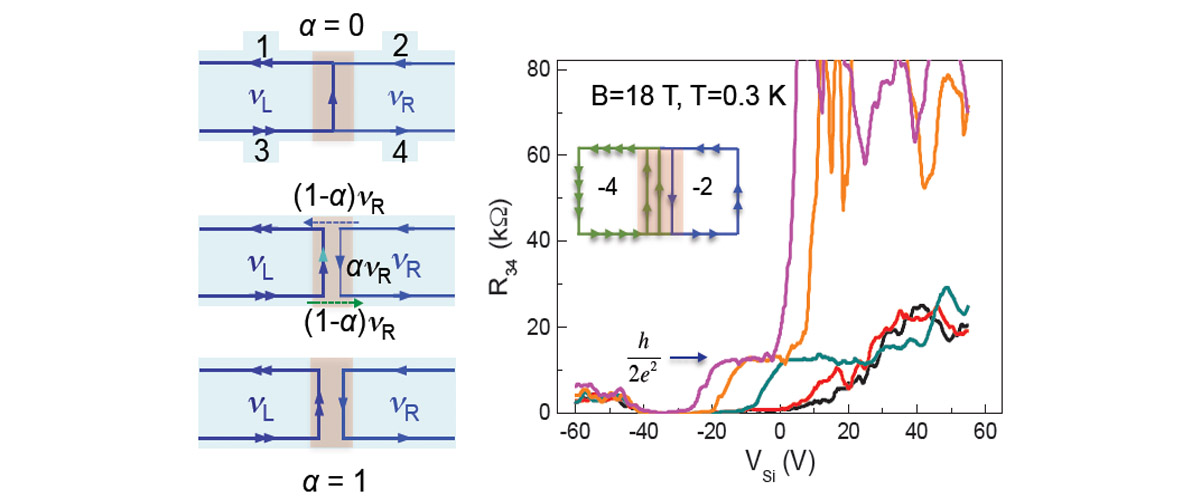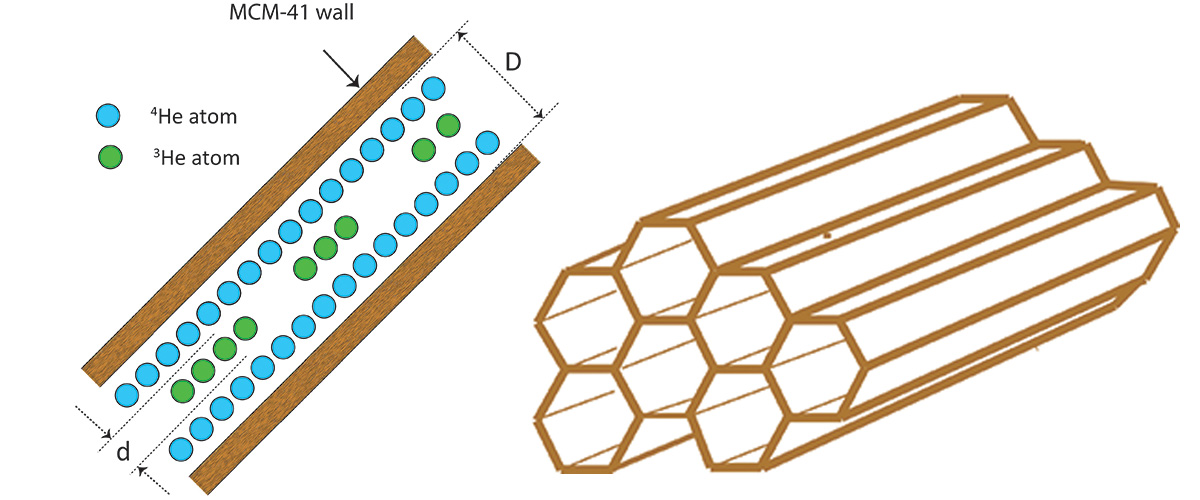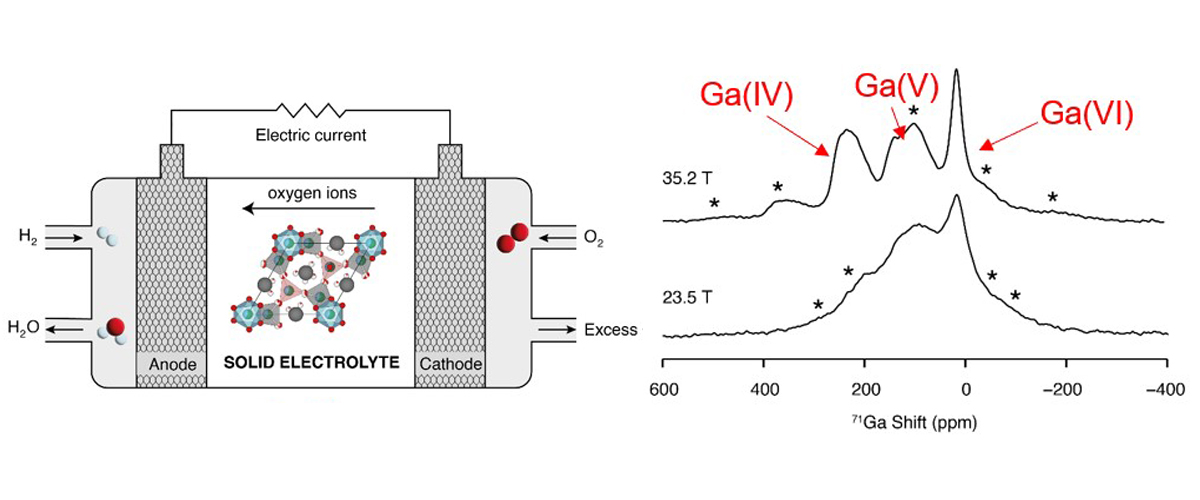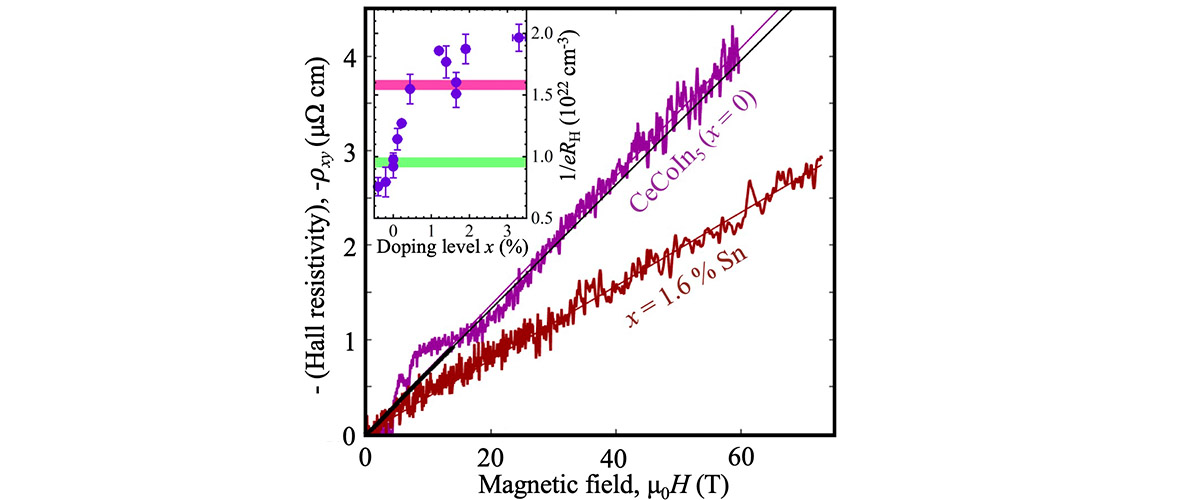What did scientists discover?
Overcoming lithographic challenges, scientists working at the MagLab fabricated dual split gated bilayer graphene devices in which the height of the tunneling barrier between the edge states of two quantum Hall systems is controlled electrically by a gate voltage. This allows researchers to continuously tune the transmission rate of edge states to examine the entire regime of 0 ≤ a ≤ 1. Users observed experimental evidence of the sequential pinch-off of individual edge states, as a function of the barrier height.
Why is this important?
Bilayer graphene exhibits even-denominator fractional quantum Hall states, whose collective excitations follow unusual quantum statistics and could be used as a basis for topological quantum computation. Experimental examination of the collective excitations requires an electron interferometer. Gate-controlled manipulation of the edge states within the quantum Hall effect is the first step towards realizing the interferometer.
Who did the research?
Jing Li,1 Hua Wen,1 Kenji Watanabe,2 Takashi Taniguchi,2 and Jun Zhu1
1Penn State University; 2National Institute for Material Science, Japan
Why did they need the MagLab?
SCM2 provides both a high magnetic field up to 18 teslas, to fully develop the quantum Hall edge states, and a low-noise measurement environment, necessary to perform precision measurements needed for this study.
Details for scientists
- View or download the expert-level Science Highlight, Switchable Transmission of Quantum Hall Edge States in Bilayer Graphene
- Read the full-length publication, Gate-Controlled Transmission of Quantum Hall Edge States in Bilayer Graphene, in Physical Review Letters
Funding
This research was funded by the following grants: G.S. Boebinger (NSF DMR-1157490); Li, Wen, Zhu (NSF DMR-1506212); Watanabe and Taniguchi (JSPS KAKENHI Grant No. JP15K21722)
For more information, contact Tim Murphy.






